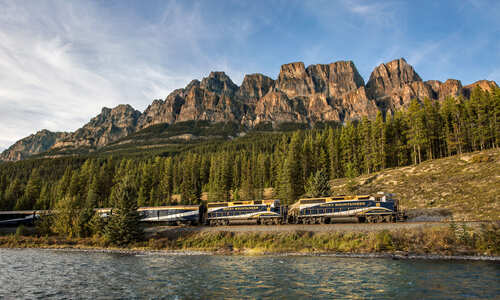Article content
5 July 2016 by Julia Hudson
This article originally appeared in Traveller magazine, authored by staff writer Guy Everton.
“Man and the claims of man no longer bound him”. So ends the tale of Buck, a Californian ranch dog kidnapped from his halcyon home and forcibly introduced to the hinterland of Canada’s Klondike region is Jack London’s much-loved The Call of the Wild. Writing through the eyes of this self-aware and insightful sled dog, London illuminates a frontier region totally alien to most of us, while playing upon a primordial yearning many intrepid travellers will recognise: the desire to throw off the shackles of convention and venture into the unknown, chasing some inexplicable inner curiosity. “It was in the Klondike I found myself”, reflected London.
This yearning once captured the imaginations of thousands. Little over a century ago, hordes of eager prospectors swarmed this rugged and beautiful landscape, American dreamers drawn by the rumours of gold-rich riverbeds in the northern wildernesses and unperturbed by the often fatal, frequently futile struggle to reach their Eldorado, the confluence of the Yukon and Klondike Rivers. Beginning in Dyea, an Alaskan port at the head of a fjord in the Inside Passage, panners would embark on the arduous trail up the glacial glens and into the Canadian interior, eventually reaching a chain of lochs from where they could navigate the Yukon River to the Klondike.
Nowadays these trails are popular with campers and hikers in the summer months, but under the ghostly glaze of winter, most still rely upon packs of sled dogs for transport. During the rush, thousands of hounds were brought to the region to pull the weighty supplies required for a successful mission. The indefatigable husky is today the only breed considered for the job, but in gold rush days, with resources scarce, all manner of dogs found their way onto the trail. Buck, a St Bernard-Collie cross, was based upon a real dog encountered by London during his time in the Klondike.
The story itself reads like London’s own journal of events seen through Buck’s eyes, and the places can still be marked on a map should travellers want to retrace his steps from Dyea to Dawson. This is a far safer journey now, especially in summer, with well-established campsites dotted along the route and park rangers supervising. Those answering the call of the wild may seek to delve a little deeper into Canada’s boundless interior.
For more on travel to Canada, we suggest reading the following:
A Visitors’ Guide to Canada’s Calgary Stampede






